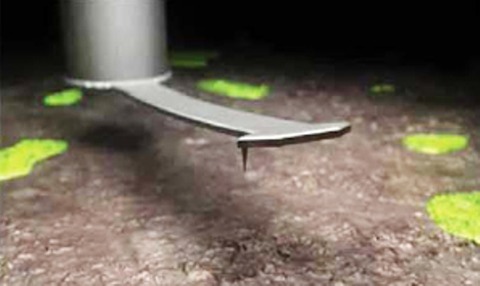Big energy from small spores
1 Feb 2013

A novel atomic force microscope could help identify materials that use energy from bacterial spores.
Ozgur Sahin at Columbia University has designed an atomic force microscope (AFM) which he claims could significantly improve the characterisation of substances on the nanoscale.
“Scientists are always working on making better microscopes to see smaller and smaller things, but what my lab wants to do is to identify not only the shapes and locations of objects but what their physical properties are,” Sahin explained.
The work may eventually lead to the development of a battery that can use energy from spores
The design consists of a cantilever with a sharp silicon tip that acts like a fingertip to scan an object’s surface and bends in response to force.
Sahin compared the process to catching fish. For example, if he puts a snippet of DNA on the needle as bait, when it comes across a matching molecular sequence, it will respond with a certain force.
Anything that combines, from amino acids to DNA, generates force. The cantilever measures this force via the twisting, bending and binding of the target molecule.
“We rely on forces and how they change,” Sahin said. “The end result is really simple but there are so many things going on. It’s classical physics.”
A growing area of research in his Northwest Corner Building nanoscience lab is bacterial spores. Sahin was curious about Bacillus, a type of bacteria commonly found in the soil.
Spores of Bacillus have accordion-like wrinkles. In humid conditions the spores absorb moisture from the air, and the wrinkles unfold and change up to 40 per cent in volume.
“The biggest power source in nature is evaporation,” said Sahin. “Our climate is powered by evaporating water from the oceans, and we have no way of accessing this energy. We can access wind power but not evaporation. This may be an opening for a completely new energy platform.”
All motion takes energy. Considering how much the spores change, Sahin figured he could harness the motion and convert it to energy. “We noticed that expanding and contracting spores can act like a muscle, pushing and pulling other objects,” he said.
The U.S. Department of Energy is supporting further research to study the force from the unfolding wrinkles and to build new types of materials by assembling the spores into larger structures. The work may eventually lead to the development of a battery that can use energy from spores.

